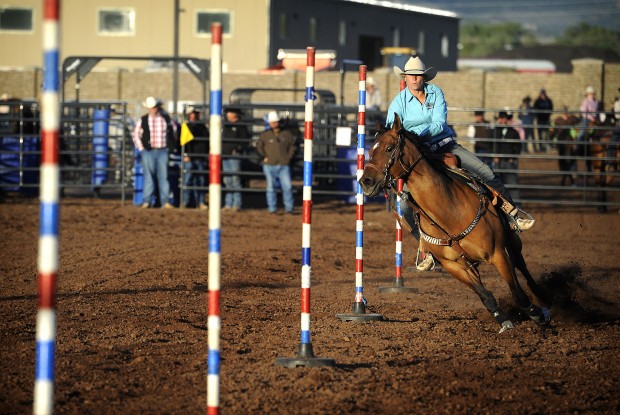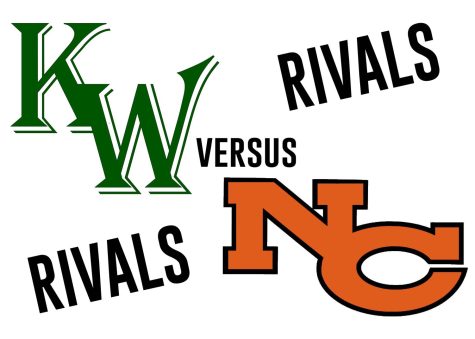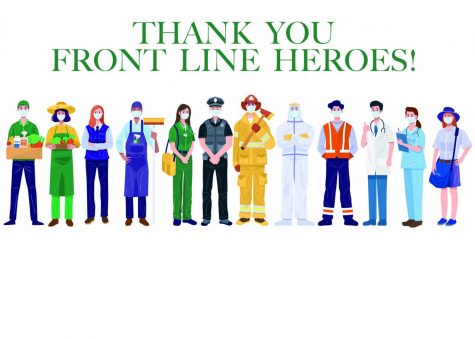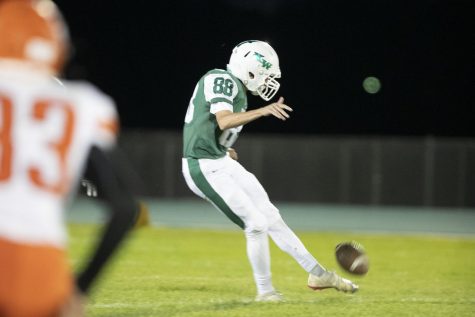No Cowboys in the Cowboy State: Why isn’t rodeo a state sanctioned sport for high schools?
October 27, 2015
A loud quote adorns the front page of the Wyoming High School Activity Associations’ (WHSAA) website: “In non-school sports, nobody’s cheering for you. In high school sports, everybody is.” This generalizing statement is true for most high school sports, but not for high school rodeo.
The website goes on to list all the wonderful school activities supported by the Cowboy State: Basketball, Cross Country, Drama, Football, Golf, Indoor Track, Journalism, Marching Band, Music, Skiing, Soccer, Speech and Debate, Spirit Groups, Swimming, Tennis, Track and Field, Volleyball, and Wrestling. High School Rodeo is nowhere to be found. So, why is rodeo not considered a sport in the Cowboy State? The answer is not easy to come by.
Rodeo, considered America’s first and oldest sport, and the only real sport of the cowboys, is as large as life outside the WHSAA’s list. In fact, according to The National High School Rodeo Association (NHSRA), high school rodeo “is one of the fastest growing youth organizations, with an annual membership of approximately 12,500 students from 41 states, five Canadian provinces, and Australia.” The events of rodeo include rough-stock competitors (saddle-bronc, bareback, bull riders), breakaway roping, team roping, goat tying, barrel racing, and pole bending. During the spring and fall, the rodeo kids are gone every weekend competing all over Wyoming and, unlike other sports, which have an “off season,” rodeo competitors practice year round, keeping themselves and their furry teammates in sync. When they are not in school, rodeo kids are out working with their livestock. These kids work tirelessly at the sport many of them consider to be a lifestyle. Still, rodeo is not considered to be a sport by the WHSAA.
The refusal of the WHSAA to recognize high school rodeo as a sport results in formidable disadvantages for high school rodeo kids. According to Amy Rose, Athletic Director of Kelly Walsh High School, “If it’s not a WHSAA sanctioned activity, then we don’t treat it as such; meaning, we wouldn’t give the kids a uniform or whatever. It wouldn’t be something that we would support monetarily or with coaches.”
An article by Jeff Miller of ESPN states, “Much of the training involving young rodeo competitors comes not from formal coaches like in other individual sports like tennis or golf. It often comes from dads and uncles and grandpas.” Essentially, no outside support is given to the members. There are no coaches to guide practices and encourage contestants or the slightest monetary support from schools.
Not only that, but because high school rodeo is not a school sanctioned sport, absences in order to participate in rodeo are unexcused. Melanee Ramirez of the Kelly Walsh Office and Records department reveals that rodeo parents had had to lie in the past about their child’s absence for rodeo in order for it to be excused. Ramirez, confused by the issues, commented, “There is high school rodeo out there, so I don’t understand; it says high school rodeo but it is not sanctioned through the high school.” The disconnect is clear and troublesome for the many kids who harbor a passion for rodeo.
Trevor Wilson, eleven year Associate Commissioner of the WHSAA begins to shed light on the subject by revealing, “As part of our rules, to add any sport, we need eight schools to come forward” in order for it to be considered. In other words, at least eight of Wyoming’s schools would have to approach the WHSAA and agree to look at sponsoring high school rodeo to get the ball rolling. At any of the fifteen Wyoming High School Rodeos during the fall and spring rodeo season, there is an average of 30 rough-stock competitors (saddle-bronc, bareback, bull riders), 40 tie-down ropers, 50 team roping pairs, 50 breakaway ropers, 30 goat tying competitors, 60 barrel racers, and 50 pole benders, from all over Wyoming participating, which altogether averages about 360 competitors per rodeo. Seemingly, because of the sheer size and span of high school rodeo, finding eight schools to come forward in support of it would not be an issue. However, in Wilson’s eleven years as Associate Commissioner of WHSAA, there has never been talk of sanctioning high school rodeo and no one has come forward in support of this. This answer still leaves the subject opaque.
Besides the issue of eight schools coming forward, Wilson believes there is only one other thing holding high school rodeo back from receiving the recognition it deserves. This reason is the fact that high school rodeo participants must pay entry fees in order to participate and have the opportunity to win back cash prizes at the end. Throughout history, rodeos have been run this way. It is simply tradition that the National High School Rodeo Association is following. Rodeo is easily the most expensive sport of all. Participants must pay for the keeping of their partners, which happen to be one thousand pound animals. This includes shoes, tack, housing, feed, and vet bills for the livestock. In rodeo, only the top ten are awarded points for the average, which are compounded into an average that decides whether or not the contestant goes to nationals. Only the top three contestants of the top ten receive any cash reward, which, when applies to the cost of hauling livestock to events, entry fees, and the cost of stall space and space for the trailers, is recycled back into the sport anyway. For contestants, cash rewards are a moot point, contestants are not after profit. Regardless, the WHSAA has a strict rule against cash awards.
Perhaps the biggest grievance high school rodeo kids face has nothing to do with the fact that WHSAA does not consider high school rodeo a sport. It is simply the fact that high school rodeo competitors never receive any recognition for the tireless work put into the sport they love and there is little understanding of their sport amongst their teachers and peers. Members of high school rodeo are independent problem solvers with outstanding work ethics, part of a family atmosphere that is always there to provide support. But, when members return from a weekend of tough competition, there is no update singing their praises over the loud speaker like there would be for a school sanctioned sport. Sadly, recognition is a luxury only school sanctioned sports receive. Newspapers outline the success of school sports, entire yearbook pages are dedicated to each sport team, and school assemblies are held to support school sports. All the while, rodeo is never mentioned. No students are encouraged to go support rodeo participants at their next rodeo. For kids who consider rodeo a lifestyle, this rejection is hard to stomach.
If the sanctioning of high school rodeo is out of reach and high school rodeo is to remain off the WHSAA’s list forever, the least rodeo kids deserve is recognition for their passion. As the athletics director, Amy Rose has more knowledge of the situation than other faculty. Rose believes, “Anything that we can do that gets kids involved in something, especially if it speaks to their passion, is totally a great thing,” and has supported the sanctioning of rodeo. However, she must still abide by the rules of the WHSAA and says of the issue, “We always want kids to be involved, so the answer is hands down yes, but right now, it’s just not seen that way in the state.” For high school rodeo kids, the statement, “In non-school sports, nobody’s cheering for you. In high school sports, everybody is,” could not be more discouragingly true.











